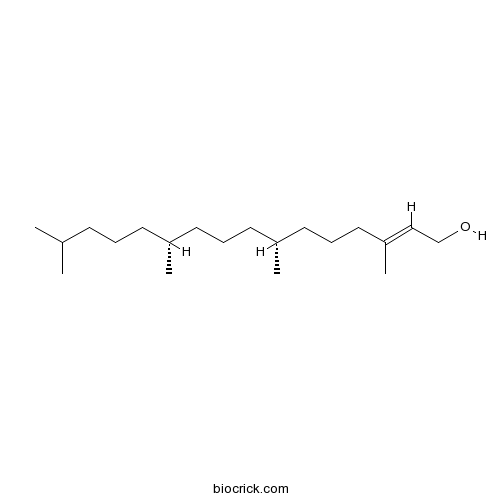Cyclosorus parasiticus
Cyclosorus parasiticus
1. The products in our compound library are selected from thousands of unique natural products; 2. It has the characteristics of diverse structure, diverse sources and wide coverage of activities; 3. Provide information on the activity of products from major journals, patents and research reports around the world, providing theoretical direction and research basis for further research and screening; 4. Free combination according to the type, source, target and disease of natural product; 5. The compound powder is placed in a covered tube and then discharged into a 10 x 10 cryostat; 6. Transport in ice pack or dry ice pack. Please store it at -20 °C as soon as possible after receiving the product, and use it as soon as possible after opening.
Natural products/compounds from Cyclosorus parasiticus
- Cat.No. Product Name CAS Number COA
-
BCN6151
Lutein127-40-2
Instructions

-
BCN1673
Phytol150-86-7
Instructions

Chalcone derivatives from the fern Cyclosorus parasiticus and their anti-proliferative activity.[Pubmed: 23891701]
Three new chalcone derivatives, named parasiticins A-C (1-3), were isolated from the leaves of Cyclosorus parasiticus, together with four known chalcones, 5,7-dihydroxy-4-phenyl-8-(3-phenyl-trans-acryloyl)-3,4-dihydro-1-benzopyran-2-one (4), 2'-hydroxy-4',6'-dimethoxychalcone (5), 2',4'-dihydroxy-6'-methoxy-3',5'-dimethylchalcone (6), 2',4'-dihydroxy-6'-methoxy-3'-methylchalcone (7). The chemical structures of the new isolated compounds were elucidated unambiguously by spectroscopic data analysis. The cytotoxic activities of compounds 1-7 were evaluated against six human cancer cell lines in vitro. Compounds 3 and 6 exhibited substantial cytotoxicity against all six cell lines, especially toward HepG2 with the IC₅₀ values of 1.60 and 2.82 μM, respectively. Furthermore, we demonstrated that compounds 3 and 6 could induce apoptosis in the HepG2 cell line, which may contribute significantly to their cytotoxicity.


